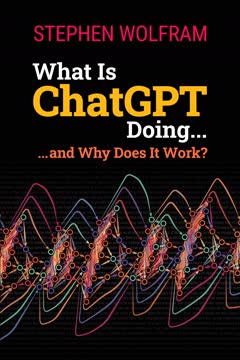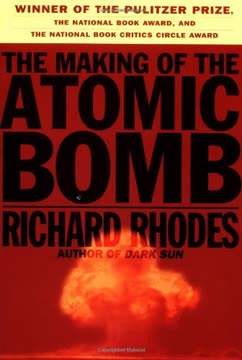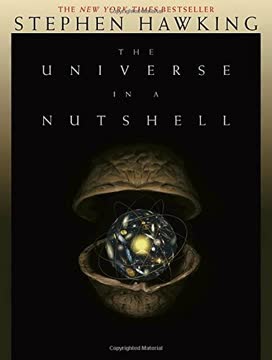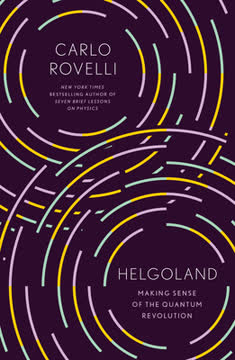Key Takeaways
1. Wheeler's journey from nuclear physics to gravitational research shaped modern physics
"I have to admit to a misjudgment of my own. In the months before Pearl Harbor, we had a radio in the Fine Hall Tea Room so that we could listen to the war news and discuss the war's progress. I reached the conclusion that a German-dominated Europe might be the best way to assure long-term peace in Europe."
From nuclear fission to black holes. Wheeler's career spanned the most transformative decades in modern physics. He began with nuclear physics, contributing to the understanding of fission and the development of the atomic bomb. This work led him to question fundamental aspects of physics, ultimately driving him towards gravitational research.
Shifting paradigms in physics. Wheeler's transition from nuclear to gravitational physics mirrored the broader shift in the field. As the implications of quantum mechanics and general relativity became clearer, physicists like Wheeler began to explore the connections between the very small and the very large. This shift led to groundbreaking concepts such as quantum foam, wormholes, and the term "black hole," which Wheeler coined.
Acknowledging mistakes and evolving views. Wheeler's admission of misjudgment regarding pre-war Europe demonstrates his willingness to reassess his beliefs in light of new information. This intellectual honesty characterized his approach to physics, allowing him to make significant contributions across multiple subfields throughout his career.
2. The Manhattan Project: A race against time with moral implications
"Joe hoped for a miraculous means of ending a terrible war. So he told me to 'hurry up.'"
Urgency and ethical dilemmas. The Manhattan Project was driven by the fear that Nazi Germany might develop atomic weapons first. This urgency led to unprecedented collaboration between scientists, engineers, and government officials. However, it also raised profound ethical questions about the use of such devastating weapons.
Personal and professional sacrifices. Many scientists, including Wheeler, put their academic careers on hold to contribute to the war effort. This decision often came with personal costs, such as time away from family and the moral burden of developing weapons of mass destruction.
Long-term consequences. The success of the Manhattan Project not only ended World War II but also ushered in the atomic age. This new era brought both the promise of nuclear energy and the threat of global annihilation, profoundly shaping international relations and scientific research for decades to come.
3. Quantum mechanics and general relativity: Unifying the very small and very large
"Spacetime tells matter how to move; matter tells spacetime how to curve."
Bridging two fundamental theories. Quantum mechanics describes the behavior of particles at the smallest scales, while general relativity explains gravity and the structure of spacetime. Wheeler's work sought to unify these seemingly disparate theories, exploring the implications of quantum effects on gravity and spacetime.
Conceptual challenges. The attempt to reconcile quantum mechanics and general relativity led to mind-bending concepts:
- Quantum foam: The idea that at the smallest scales, spacetime is not smooth but constantly fluctuating
- Wormholes: Theoretical tunnels in spacetime that could connect distant regions of the universe
- Gravitational waves: Ripples in spacetime caused by massive accelerating objects
Implications for our understanding of the universe. These ideas have profound consequences for our understanding of the origin and nature of the universe, potentially explaining phenomena such as black holes, the Big Bang, and the fundamental structure of reality itself.
4. The power of collaboration and mentorship in scientific breakthroughs
"I like to say, when asked why I pursue science, that it is to satisfy my curiosity, that I am by nature a searcher, trying to understand. Now, in my eighties, I am still searching."
Importance of mentorship. Wheeler benefited from and later provided mentorship throughout his career. His interactions with figures like Niels Bohr and Albert Einstein shaped his approach to physics, while he in turn guided students who became influential physicists in their own right, such as Richard Feynman and Kip Thorne.
Collaborative nature of physics. Major breakthroughs often resulted from intense collaboration:
- The Manhattan Project brought together diverse talents to achieve a single goal
- The Shelter Island Conference of 1947 sparked new developments in quantum electrodynamics
- Wheeler's work with students and colleagues led to significant advances in gravitational physics
Fostering a culture of inquiry. Wheeler's approach to physics emphasized asking fundamental questions and exploring unconventional ideas. This attitude inspired his students and colleagues to push the boundaries of theoretical physics, leading to numerous discoveries and new fields of study.
5. Pushing theoretical limits: From geons to quantum foam
"Whatever can be, is. (Or, more strongly put, Whatever can be, must be.)"
Exploring extreme predictions. Wheeler was known for pushing theories to their logical limits, even when the results seemed absurd. This approach led to concepts like:
- Geons: Hypothetical entities made of electromagnetic or gravitational waves held together by their own gravity
- Quantum foam: The idea that spacetime at the smallest scales is a roiling sea of appearing and disappearing virtual particles
- Charge without charge: The concept that electric charge could be a property of spacetime geometry rather than a fundamental particle property
Importance of theoretical exploration. By exploring these extreme predictions, Wheeler and his colleagues uncovered new insights about the nature of reality and pushed the boundaries of what was considered possible in physics.
Influence on modern physics. Many of Wheeler's seemingly outlandish ideas have become central to contemporary physics research:
- The study of quantum gravity
- Investigations into the nature of spacetime at the smallest scales
- Explorations of the relationship between information and physical reality
6. The impact of historical events on scientific progress
"I am convinced that the United States, with the help of its British and Canadian allies, could have had an atomic bomb sooner and ended the war sooner—perhaps a year sooner than the summer of 1945—if scientific and political leaders had committed themselves to the task earlier."
World War II and the atomic age. The war accelerated scientific research, particularly in nuclear physics. This led to rapid advancements but also raised ethical concerns about the use of science for destructive purposes.
Cold War and the space race. Political tensions between the United States and the Soviet Union drove significant investments in scientific research and education. This period saw:
- Increased funding for physics research
- The development of powerful particle accelerators
- Advancements in space technology and exploration
Societal changes and scientific ethics. The aftermath of World War II and the subsequent Cold War led to debates about the role of scientists in society and the ethical implications of their work. Wheeler's own evolving views on these issues reflected broader changes in the scientific community.
7. The role of imagination and persistence in groundbreaking discoveries
"I always thought that this triangle should be called the 'Tiomno triangle.' He got there first. But a few months after our paper appeared, Giampietro Puppi published similar ideas in an Italian journal. He, too, saw the great simplicity of a common interaction among nucleons, electrons, muons, and neutrinos. As luck would have it, the Tiomno triangle is now known to everyone as the 'Puppi triangle,' even though Puppi did not include a diagram in his paper."
Importance of creative thinking. Wheeler's approach to physics often involved imaginative leaps and unconventional ideas. This creativity was crucial in developing new concepts and pushing the boundaries of theoretical physics.
Persistence in the face of skepticism. Many of Wheeler's ideas, such as the concept of black holes, were initially met with skepticism. His persistence in exploring these concepts, despite initial resistance, ultimately led to significant advancements in our understanding of the universe.
Recognition and priority in science. The story of the "Tiomno triangle" illustrates the complex nature of scientific discovery and recognition. Important ideas often emerge simultaneously in different places, and the attribution of credit can be influenced by factors beyond the quality or primacy of the work itself.
8. Balancing academic pursuits with national service during wartime
"I am convinced that the United States, with the help of its British and Canadian allies, could have had an atomic bomb sooner and ended the war sooner—perhaps a year sooner than the summer of 1945—if scientific and political leaders had committed themselves to the task earlier."
Duty versus personal interests. Many scientists, including Wheeler, faced the dilemma of choosing between their academic research and contributing to the war effort. This often meant putting promising careers on hold to work on classified projects.
Long-term impact on scientific careers. Participation in wartime research projects like the Manhattan Project had lasting effects on scientists' careers:
- Exposure to new fields and technologies
- Establishment of important professional networks
- Shifts in research focus based on wartime experiences
Ethical considerations. The development of atomic weapons raised profound moral questions for the scientists involved. Wheeler's reflections on the potential to end the war earlier highlight the complex interplay between scientific advancement and its real-world consequences.
9. The evolution of computing power and its impact on theoretical physics
"By the fall of 1951, with ideas getting translated into hardware, the center of gravity of the thermonuclear work shifted toward W Division, headed by the extremely competent, no-nonsense engineer, Marshall Holloway. We theorists could draw our spheres and cylinders on the blackboard. Holloway had to make them real."
From manual calculations to early computers. The development of nuclear weapons and advanced physics theories required increasingly complex calculations:
- Initially relying on teams of human "computers" using mechanical calculators
- Transition to early electronic computers like ENIAC and MANIAC
- Continuous improvement in computing power enabling more sophisticated simulations and calculations
Impact on theoretical predictions. The increasing availability of computational power allowed physicists to:
- Test theoretical predictions more thoroughly
- Explore complex systems that were previously intractable
- Develop new numerical methods for solving physical problems
Synergy between theory and computation. As computational capabilities grew, theoretical physics and computer science began to influence each other more deeply:
- Development of new algorithms for physics simulations
- Use of physical principles to inspire new computing paradigms
- Exploration of the fundamental relationship between information and physical reality
10. Personal relationships and family life in the midst of scientific pursuits
"I had no doubt that Fermi's experiment would work as planned. I remained in Wilmington that day, working with Du Pont colleagues on the reactors that lay ahead."
Balancing family and career. Wheeler's memoir reveals the challenges of maintaining a family life while pursuing groundbreaking scientific research and participating in critical national projects. His wife, Janette, played a crucial role in supporting his career and managing family responsibilities.
Impact of work on personal life. Wheeler's career choices often affected his family:
- Frequent moves to new research locations
- Extended periods of separation during wartime work
- Exposure to different cultures through international collaborations and visiting professorships
Legacy and influence on children. Despite the demands of his career, Wheeler maintained close relationships with his children:
- Encouraging their educational pursuits
- Sharing his passion for science and inquiry
- Demonstrating the importance of balancing professional ambitions with personal values and relationships
Last updated:
FAQ
1. What is Geons, Black Holes and Quantum Foam: A Life in Physics by John Archibald Wheeler about?
- Autobiographical scientific journey: The book is an autobiography of John Archibald Wheeler, chronicling his life, career, and major contributions to 20th-century physics.
- Exploration of fundamental physics: It covers Wheeler’s work on nuclear fission, quantum mechanics, general relativity, black holes, geons, and quantum foam.
- Historical and personal context: The narrative intertwines scientific breakthroughs with personal anecdotes, collaborations, and reflections on the ethical and philosophical implications of scientific discovery.
2. Why should I read Geons, Black Holes and Quantum Foam by John Archibald Wheeler?
- Firsthand account of physics history: Readers gain unique insights into pivotal moments in modern physics, including the Manhattan Project and the development of quantum theory.
- Blend of science and philosophy: Wheeler’s reflections inspire curiosity about the universe’s mysteries and the role of information in reality.
- Engaging storytelling: The book combines technical explanations with personal stories, making complex ideas accessible and illustrating the human side of scientific endeavor.
3. What are the key takeaways from Geons, Black Holes and Quantum Foam by John Archibald Wheeler?
- Interplay of theory and experiment: Wheeler emphasizes the importance of confronting theoretical ideas with experimental results to advance understanding.
- Information as fundamental: The concept of “it from bit” suggests that information underlies all physical reality, especially in quantum mechanics and black hole physics.
- Unification challenges: The book highlights the ongoing quest to reconcile general relativity and quantum mechanics, particularly at the Planck scale where quantum foam dominates.
4. What were John Archibald Wheeler’s contributions to nuclear fission as described in Geons, Black Holes and Quantum Foam?
- Collaboration with Niels Bohr: Wheeler and Bohr developed the theoretical framework for nuclear fission, explaining how heavy nuclei split and the importance of isotope-specific reactions.
- Impact on atomic bomb development: Their insights were foundational for the Manhattan Project, influencing reactor design and the production of fissile materials.
- Technical breakthroughs: Wheeler helped clarify the energy barriers and decay paths in fission, and predicted the fissionability of plutonium-239.
5. How does Geons, Black Holes and Quantum Foam by John Archibald Wheeler describe the Manhattan Project and Wheeler’s role?
- Scientific and engineering leadership: Wheeler worked on the design and operation of plutonium production reactors, bridging theory and industrial engineering.
- Problem-solving under pressure: He addressed technical challenges like xenon-135 poisoning, which threatened reactor operation.
- Personal and ethical reflections: The book discusses the emotional toll of wartime work and the moral complexities of developing atomic weapons.
6. What is the significance of the “xenon poisoning” problem in nuclear reactors according to Wheeler’s book?
- Discovery of neutron absorber: Wheeler identified xenon-135 as a fission product that absorbs neutrons, causing sudden drops in reactor reactivity.
- Understanding decay chains: The time-dependent buildup and decay of xenon-135 required new engineering solutions for reactor control.
- Interplay of physics and engineering: Solving the problem involved both theoretical insight and practical adjustments, highlighting the collaborative nature of large-scale science.
7. How does Geons, Black Holes and Quantum Foam by John Archibald Wheeler explain the liquid-droplet model of the nucleus?
- Nucleus as a liquid drop: The model treats the nucleus as a collective system where nucleons share energy, explaining nuclear reactions and fission.
- Comparison to other models: It improves upon solid and gas models by accounting for energy distribution and deformation during nuclear processes.
- Foundation for further theories: The liquid-droplet model led to the collective model, combining surface behavior with independent particle motion to explain nuclear structure.
8. What are geons, and how do they relate to Wheeler’s concepts of “mass without mass” and “charge without charge” in Geons, Black Holes and Quantum Foam?
- Definition of geons: Geons are hypothetical entities where energy, such as electromagnetic fields, is held together by its own gravity, forming particle-like objects without traditional matter.
- Mass from energy: Wheeler proposed that mass could arise purely from energy confined in spacetime geometry, challenging conventional notions of mass.
- Charge from topology: He extended the idea to electric charge, suggesting that spacetime topology (like wormholes) could create the appearance of charge without point particles.
9. How does Geons, Black Holes and Quantum Foam by John Archibald Wheeler describe black holes and their importance?
- Inevitable outcome of relativity: Black holes form from gravitational collapse when massive stars contract beyond a critical radius, trapping light and matter.
- Simplicity and “no hair” theorem: Externally, black holes are described only by mass, charge, and spin, losing all other information about their origin.
- Quantum and thermodynamic properties: Wheeler discusses black hole entropy and Hawking radiation, linking black holes to the fundamental laws of quantum mechanics and thermodynamics.
10. What is quantum foam, and why is it significant in Geons, Black Holes and Quantum Foam by John Archibald Wheeler?
- Turbulent spacetime at small scales: Quantum foam describes the wild fluctuations of spacetime geometry at the Planck scale, where classical concepts break down.
- Planck length and time: Wheeler explains that below these scales, spacetime is no longer smooth, and quantum gravitational effects dominate.
- Implications for unification: Quantum foam represents a frontier where quantum mechanics and general relativity must be unified, influencing the search for a theory of quantum gravity.
11. What is Wheeler’s “it from bit” concept in Geons, Black Holes and Quantum Foam, and what does it mean for physics?
- Information as the foundation: “It from bit” posits that every physical entity arises from binary yes-no choices made in quantum measurement.
- Measurement creates reality: Wheeler argues that acts of observation collapse potentiality into actuality, making information central to the existence of the universe.
- Connection to black holes: The idea is exemplified in black hole entropy, where the event horizon encodes vast amounts of information about the matter that formed the black hole.
12. What are the best quotes from Geons, Black Holes and Quantum Foam by John Archibald Wheeler, and what do they mean?
- “How come the quantum? How come existence?” Reflects Wheeler’s quest to understand the deepest mysteries of reality and the origins of quantum phenomena.
- “A black hole has no hair.” Expresses the simplicity of black holes, which are defined only by mass, charge, and spin, regardless of their formation history.
- “It from bit.” Summarizes Wheeler’s belief that information is the fundamental building block of the universe, with physical reality emerging from binary choices in measurement.
- “Problems worthy of attack prove their worth by hitting back.” Highlights the value of challenging scientific problems in advancing knowledge and understanding.
Review Summary
Geons, Black Holes and Quantum Foam receives praise for its insightful autobiography of physicist John Wheeler. Readers appreciate the blend of personal anecdotes and scientific explanations, covering Wheeler's involvement in major 20th-century physics developments. The book offers accessible explanations of complex concepts and provides fascinating stories about renowned physicists. Some criticize the narrative structure and lack of introspection regarding weapons work. Overall, it's recommended for those interested in physics history, though a background in the subject is helpful for full appreciation.
Similar Books










Download PDF
Download EPUB
.epub digital book format is ideal for reading ebooks on phones, tablets, and e-readers.




